The 5th biannual Conference on Anticipation was hosted by the Centre for Social Futures at Lancaster University in September and IMAGINE was well represented, presenting four papers!
When: 11th – 14th of September 2024
Where: Lancaster University, United Kingdom
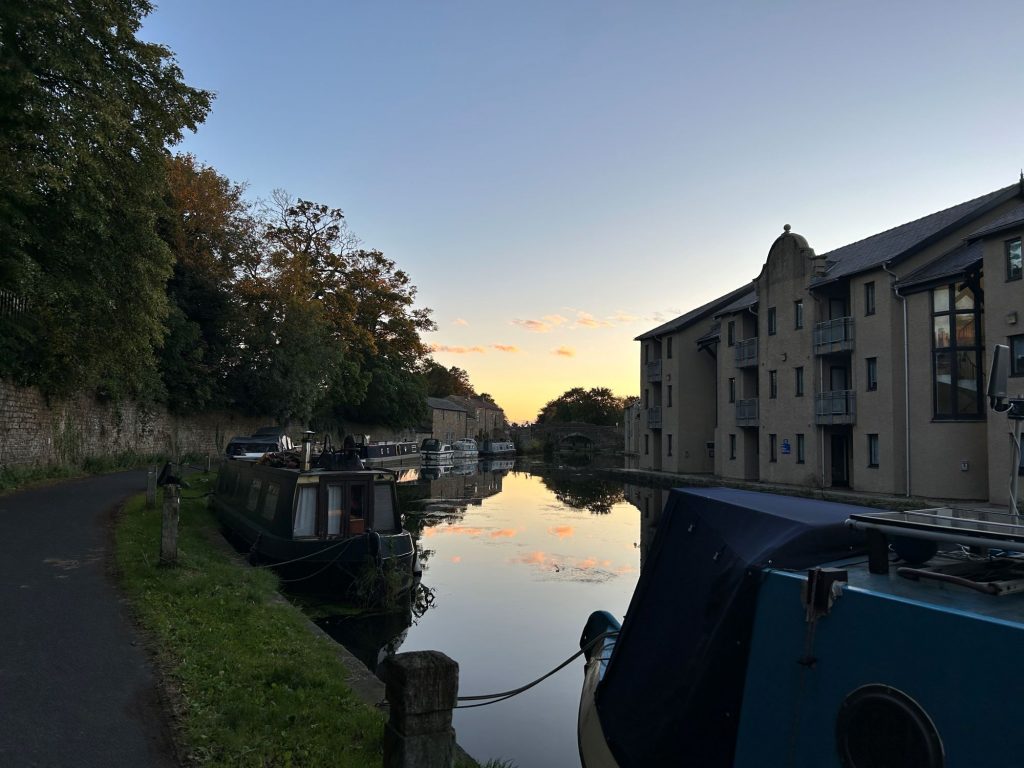
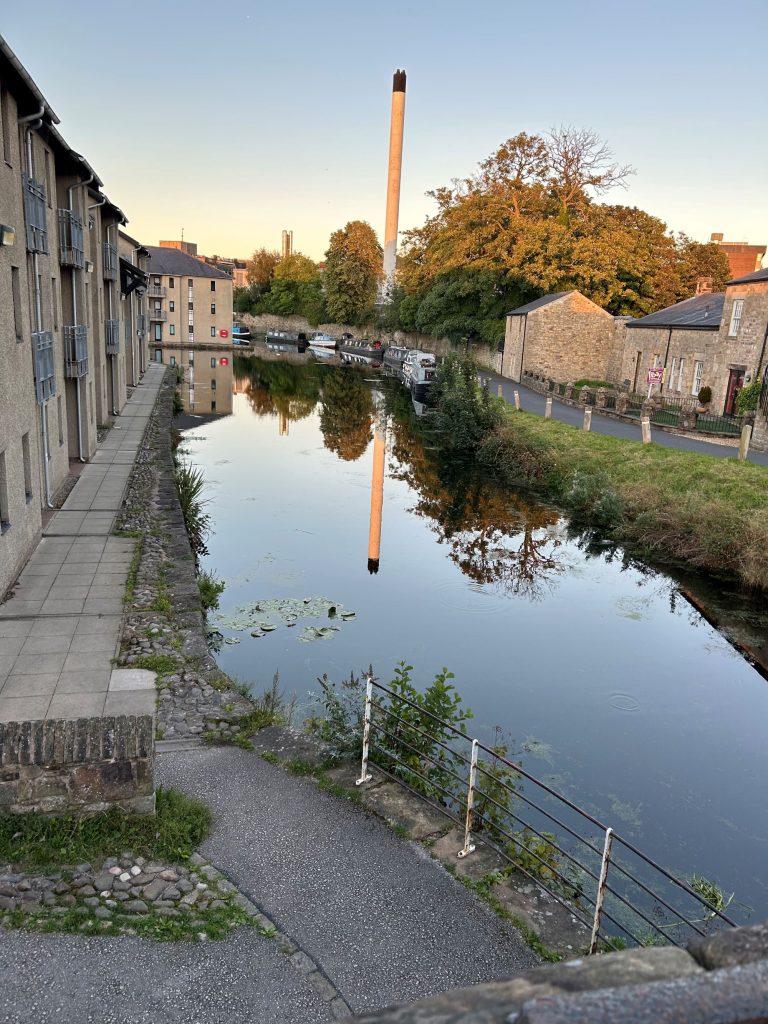
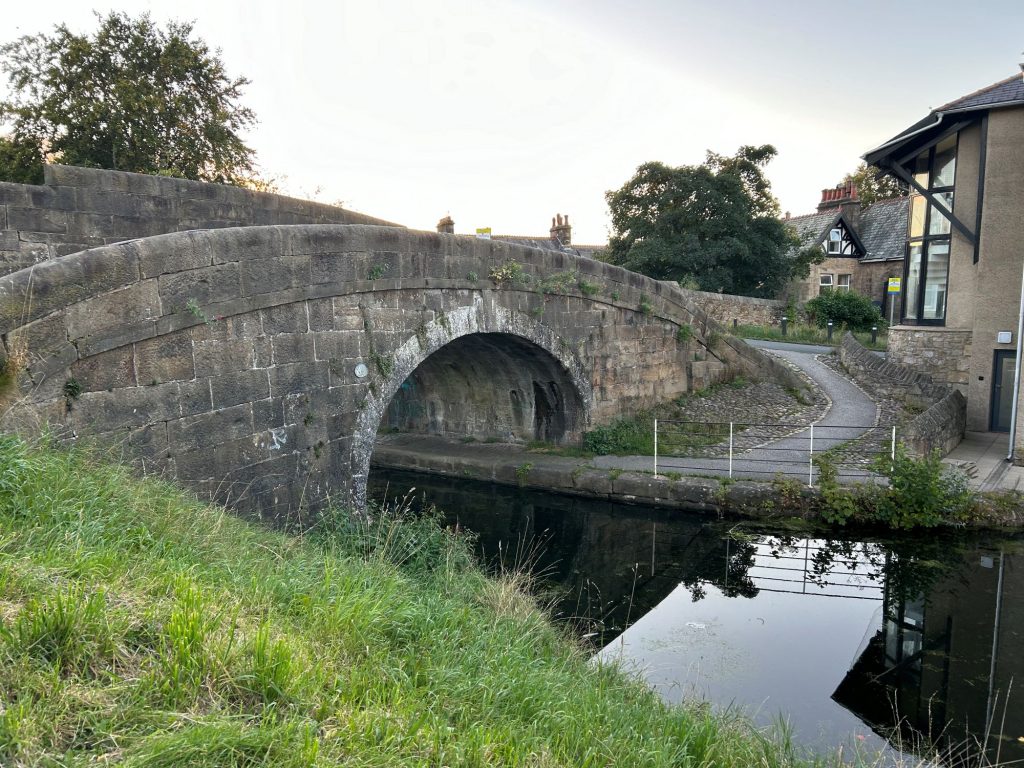
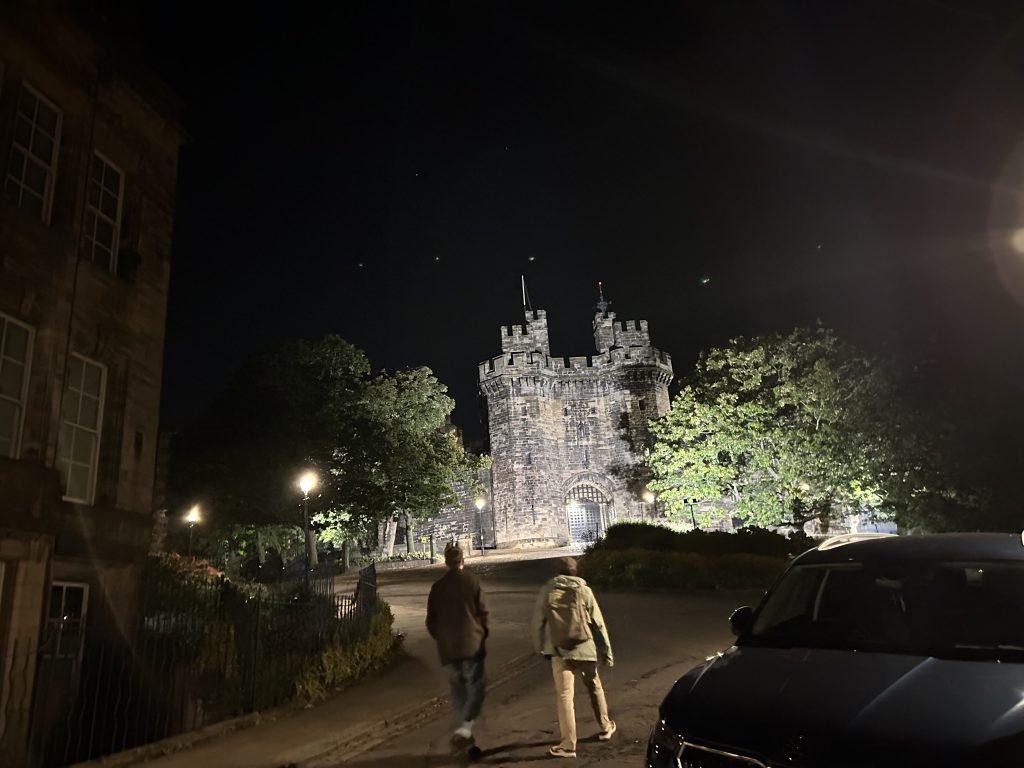
The conference emphasized questions of justice in 7 thematic areas: Social futures, Environmental crisis and societal change, Decolonising futures, Past futures and generational ancestries, Storytelling, imagination and the right to anticipate, Timescapes, timelines and timespans, and Ideas of the future informing action in the present. It further encouraged contributions to “use Anticipation as a means of engaging with the climate emergency, transitional justice, AI and ethics, energy security, social inequalities, public health and wellbeing, socio-technical systems, cultural values, activism, the right to protest, and more”.
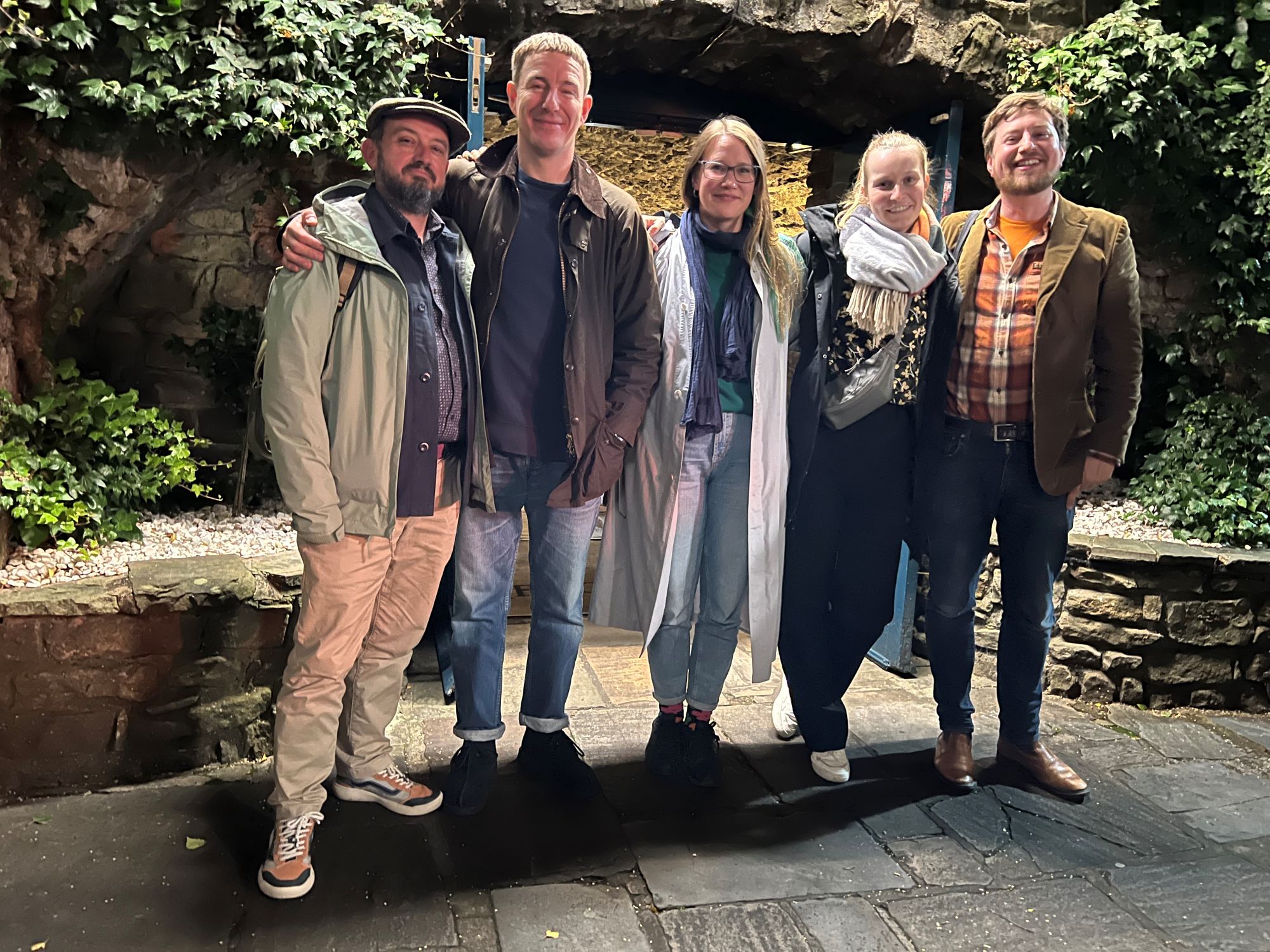
The contributions from IMAGINE
In the session A WORLD OF FUTURES, Dan Welch presented the paper “Imagined Futures of Crisis in the UK and Norway”, co-written with Audun Kjus and Nina Heidenstrøm. The paper compares consumers stories in the two countries and how they see the future related to modernity’s ideas of progress.
In the session FEEDING THE FUTURE, Lisbeth Løvbak Berg presented “Between the future and the present: Norwegian food imaginaries” co-authored with Justyna Jakubiec, Virginie Amilien and Atle Wehn Hegnes. The paper compares food imaginaries from all three stakeholder groups examined in the project: consumers, businesses and policymakers. It further discusses whose anticipations are taken into account – whose ideas are allowed to dominate.
Imagine was also represented in two of three DESIGNING THE FUTURE sessions:
Dan Lockton and Femke Coops’ paper “Exploring imaginaries of ‘sustainable’ futures through design education”, presented the work they have been doing exploring the IMAGINE themes through work with students at Eindhoven University of Technology;
James Duncan Lowley’s paper “Experiments & Exposure – Design Imaginaries in a Workshop Context”, explored the contribution of critical design to the CONFRONT stakeholder workshops, an integral part of the project organised at the beginning of the year
Scroll down to read the abstracts at the bottom of this post.
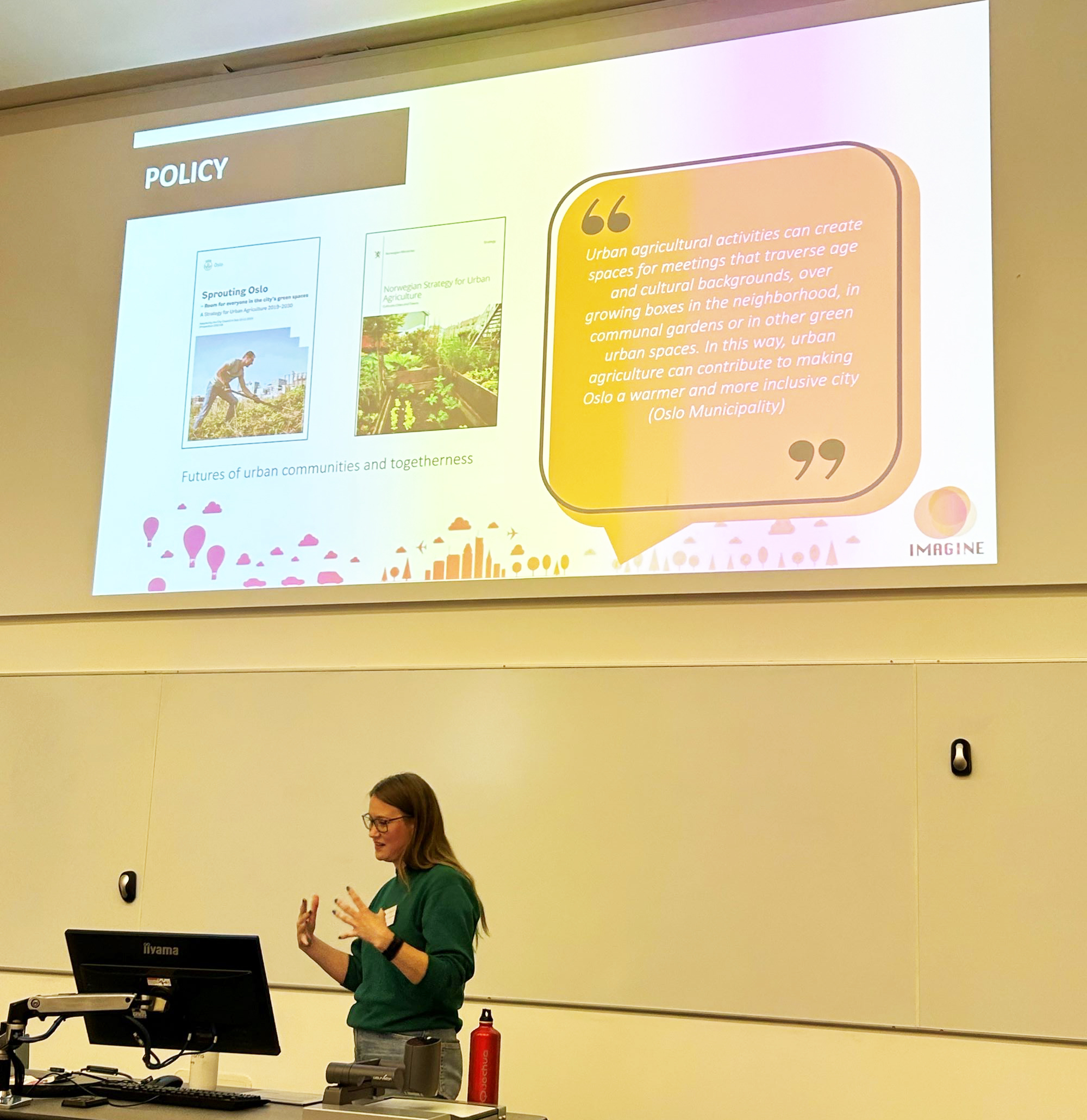
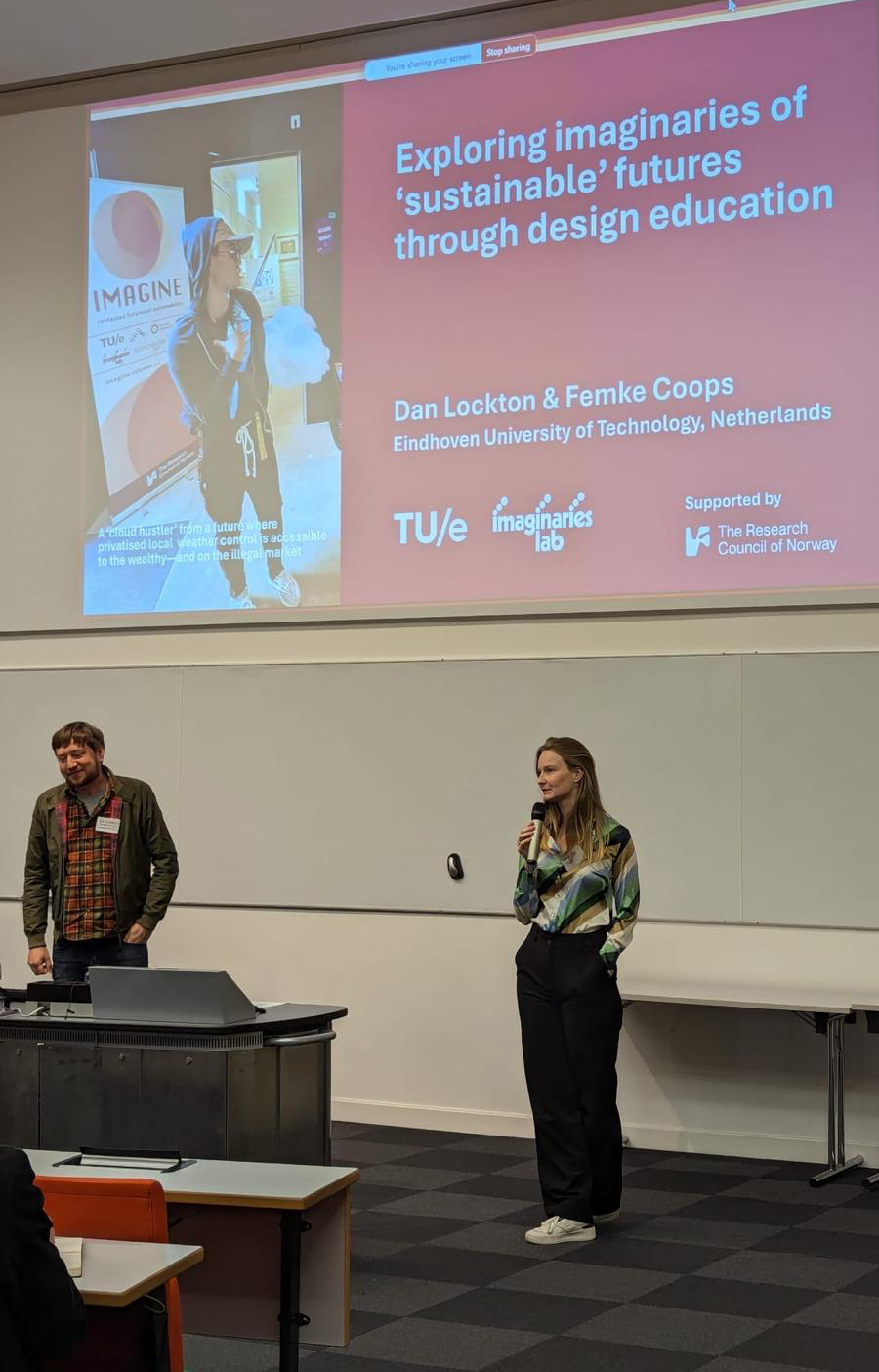
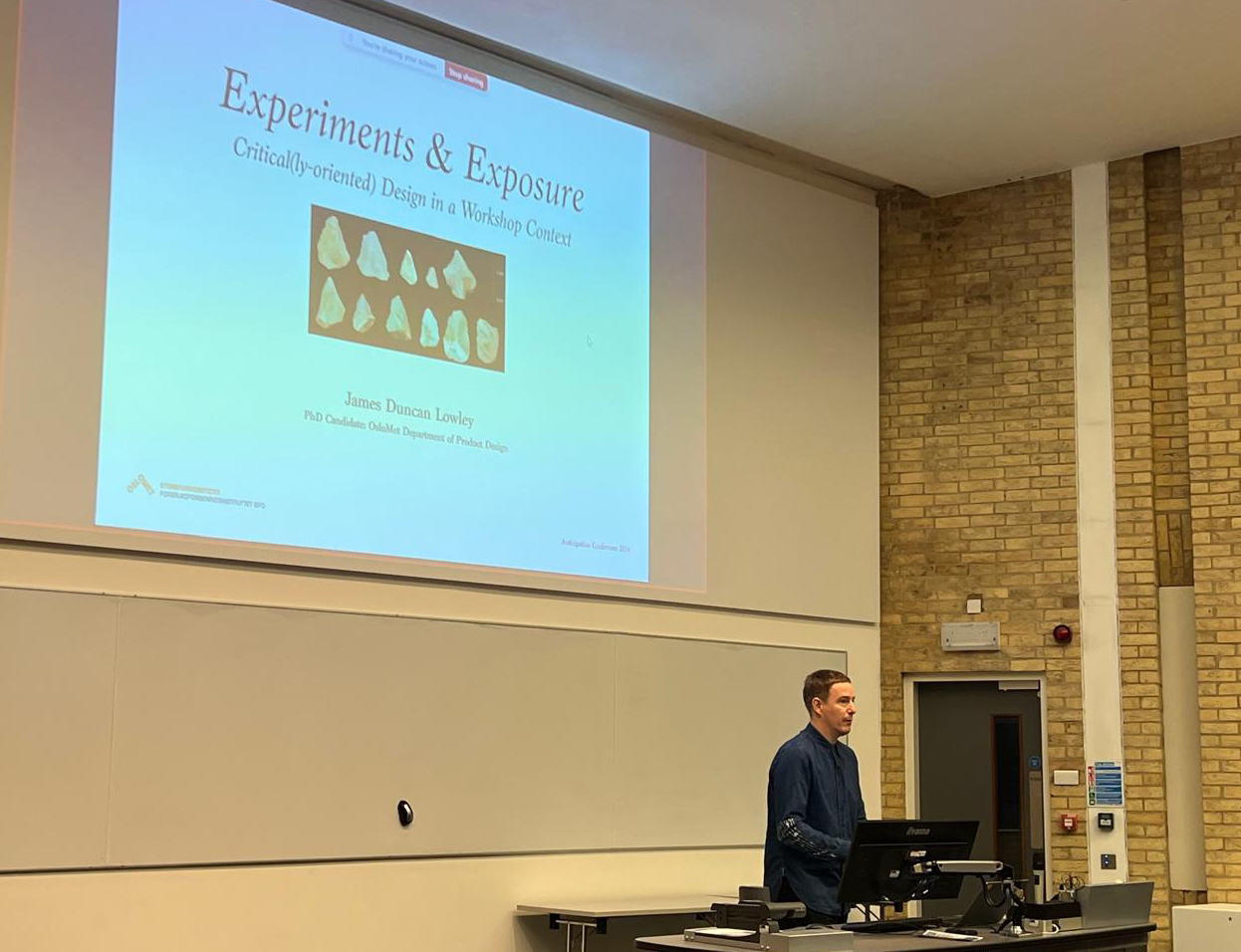
Take-aways from the conference
The conference brought forward many perspectives relevant to the IMAGINE project and the work on creating sustainable futures.
The curated session called AFFECTIVE PREFIGURATION, chaired by Ann Light and Kristina Lindström brought forward the affective dimensions of change by calling into question our dealings with the emotions related to change, and in particular grief and hope. As one speaker put it:
Undoing our entanglement with fossil fuels will also involve the public and engender a certain sense of loss.
The questions asked in this session resonate with the consumer stories collected in IMAGINE: What are the things we are losing? And are we also gaining some? Do we experience grief in anticipation of loss and change and how can we work with this? And what is the role of hope within futures work?
Toby Shulruff’s presentation “How we tell stories matters: World Expos as Futures Lab” brought forward a complementary perspective on dominant imaginaries by discussing the future-making function of the World Expos and their underlying premise that we need one universal story that all can relate to.
Access the book of abstracts from the conference to read more about these papers here.
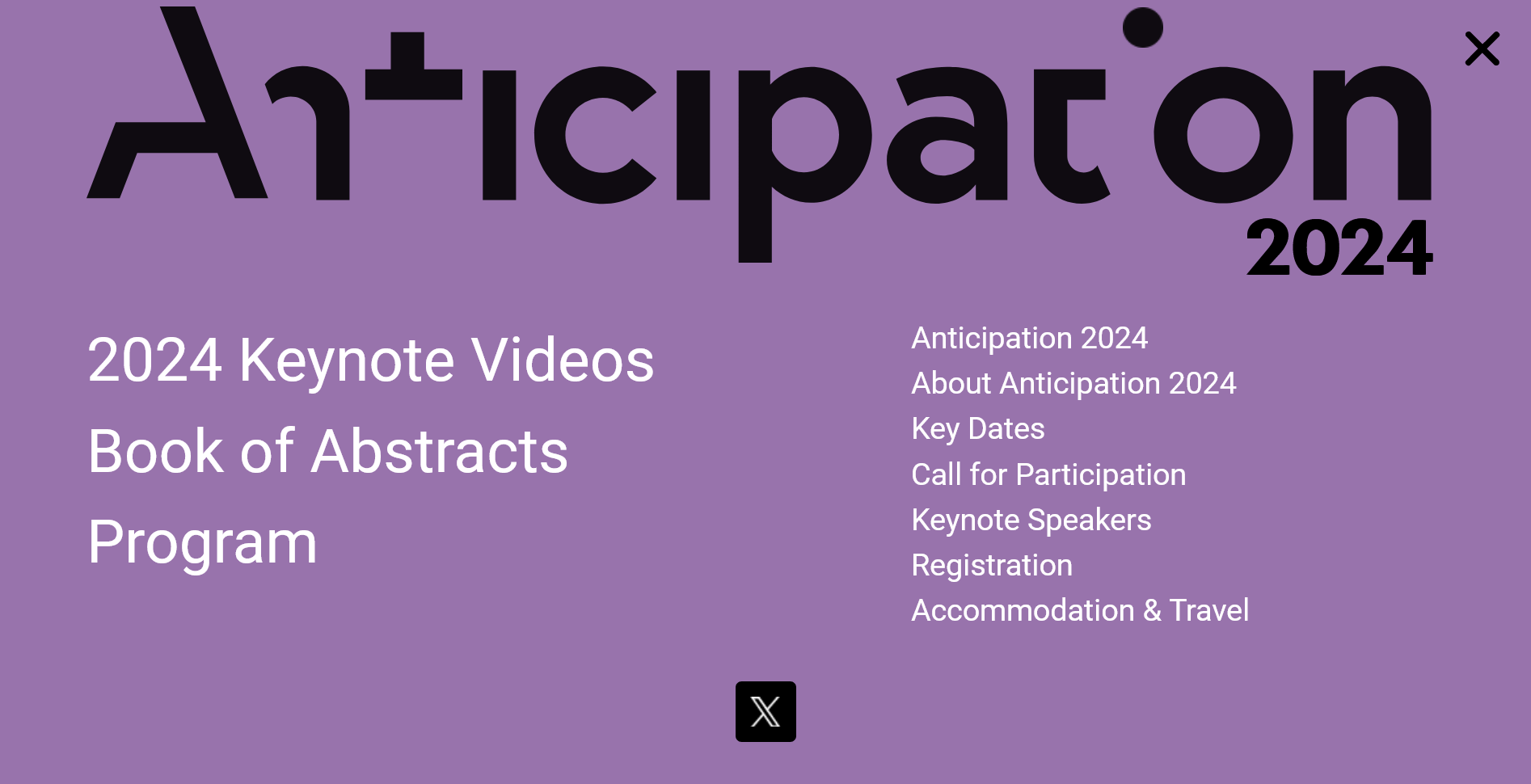
The 5th edition of the Anticipation Conference also brought forward discussions of the future of this emerging community of research – is it a field or a discipline? What should it seek to be? Are anticipation studies a part of future studies or is it a discipline of its own? Or should it remian a more open field and community, and what does it have to offer to other communities/disciplines?
Roberto Poli, one of the initiators of the conference, stated in his closing keynote that we know more about the future than we think. In reality, many things we know about the past are also based on assumptions. He hence challenged social sciences’ statements concerning the impossibility of working with the future as it is unknown.
This work of bringing the future (back) into social sciences, like sociology, is at the core of the IMAGINE project, and the multidisciplinary approach of the Anticipattion Conference, bringing together social sciences, design, and more, resonates well with the IMAGINE project.
Therefore, we, in the IMAGINE project look forward to participating further in this community and anticipate it developing, maturing and growing over the coming years!
Conference Abstracts
Imagined Futures of Crisis in the UK and Norway
Daniel Welch, Audun Kjus & Nina Vatvedt Heidenstrom
University of Manchester, Norwegian Ethnological Research, Oslo Metropolitan University
The promissory legitimacy (Beckert 2020) of twentieth century democratic capitalism was based on an understanding of the inextricable linkages of modernity, democracy, capitalism, and technological progress, and, a future of ‘prosperity for all’ and ever-rising living standards in the ‘consumer society’. Concomitant with accelerating climate change, ecological crisis, and, following the 2007/8 financial crisis, spiralling inequality and the rise of political populisms, there has been a profound loss of faith in this promissory legitimacy. The paper explores how people imagine the future in the context of the loss of this widely shared cultural understanding of the future. The paper draws on research from two projects, one in the UK and one in Norway, that have asked people to imagine the future —‘Imagined Futures of Consumption’ (2018-2021) funded by the UK Economic and Social Research Council) and ‘IMAGINE: Contested Futures of Sustainability’ (2021 – 2024), funded by the Research Council of Norway. The first produced data through collaboration with the UK’s Mass Observation Project, the second through a qualitative questionnaire issued by the Norwegian Ethnological Research Institute. Both projects produced free text responses to neutrally framed prompts or questions about imagining life in the future and produced rich data on people’s engagement with understandings of the future, climate change and ecological crisis, capitalism and modernity. The paper explores key discursive figures that emerge from both datasets and reflects through these on our contemporary historical moment.
Between the future and the present. Norwegian food imaginaries
Justyna Jakubiec, Lisbeth Løvbak Berg, Virginie Amilien & Atle Wehn Hegnes
Utrecht University, Oslo Metroplitan University
Food consumption is one of the major consumption areas that need to be reimagined to create a sustainable future. Policy documents and business strategies play a significant role in imagining and manifesting food futures on the consumer level. As such, they largely influence the consumers’ perspectives and their sense of agency in imagining possible food futures. Through a comparative study based on an analysis of Norwegian policy documents and business strategies, 137 stories collected from Norwegian consumers, and fieldwork on local food initiatives in Oslo, we ask: Whose voices and ideas of food futures are included in the imagining of Norwegian food futures and what imaginaries are manifesting on the consumer level? With Norwegian consumer narratives as a reference point, we approach our research question by exploring the narratives of the official documents. We further position the local initiatives in relation to these narratives. Our analysis shows that the narratives of national government policy and business strategies often overlap but differ from consumer narratives. In contrast, more resonance with the consumers’ perspectives can be found in the narratives of local government policy. For example, while business strategies reflect government policy’s focus on healthy food and propose on-the-go food products, consumer stories of a simpler life are reflected in local government policy’s focus on urban gardening. The more marginal imaginaries contained within the local food initiatives, however, resonate well with these consumer imaginaries. Hence, the analysis indicates that the narratives of official policy and business documents do not resonate with the consumer perspectives despite their significant influence on them.
Thus, the paper highlights the need for more negotiations between these dominant narratives and imaginaries from consumer narratives, manifested more marginally in local initiatives, to guide policy efforts towards manifesting futures that are desirable to the consumers who will inhabit them.
Exploring imaginaries of “sustainable” futures through design education
Dan Lockton & Femke Coops,
Eindhoven University of Technology, Netherlands
How do people imagine what a ‘sustainable’ future might entail in everyday life— and where do those ideas come from? How does the age of planetary crises affect these imaginaries at the level of everyday societal experiences? Can speculative and participatory design methods play multiple roles: by materialising aspects of diverse (and divergent) possible futures in engaging and experiential ways— enabling provocation, confrontation, emotion, and reflection; and also by helping people imagine different futures, beyond dominant imaginaries? Can this approach be valuable as part of the ongoing processes of (just) transitions? IMAGINE: Contested Futures of Sustainability (Welch et al, 2022) is an interdisciplinary research project across
humanities, social sciences, design, and arts, bringing together researchers from Norway, the Netherlands and the UK. The project aims to address the societal power of cultural imaginaries of sustainability— specifically in relation to imagined futures—via a
programme of research including working with design students in Norway and the Netherlands. Consumption-related practices around eating, dressing, and moving are taken as focal points for exploring these imaginaries. In this paper we will examine specifically our work with industrial design students in the Netherlands, at a technical university where largely techno-optimistic imaginaries of futures dominate, to explore where the ideas come from (in culture, media, and education), how they are socially performative (Oomen et al, 2021) within design, and how creative projects around
‘researching the future everyday’ (Kuijer, 2019; Kuijer & Robbins, 2022) can challenge, provoke, and build a broader base for imagination and transformative conceptions of sustainability in design. We discuss, through examples, methods and exercises which support this way of working, how elements of speculative fiction, hauntology (in the ‘lost futures’ sense of Fisher (2014), and other activities centred on imagination can contribute to a practical educational context for anticipation and design (e.g. Celi & Morrison, 2019; Morrison et al, 2023), We suggest how these approaches can be
situated in relation to other work on futures and design, including Transition Design (Irwin et al, 2015; Juri et al, 2021; Coops et al, 2024; Lockton & Candy, 2018) and the wider fields of design fiction (e.g. Hebrok & Mainsah, 2022) and speculative design (e.g. Mitrović et al, 2021).
Experiments and exposure: Critical design in a workshop context
James Lowley
Oslo Metropolitan University
This contribution shares the potential of critical design works when deployed as a central feature within experimental workshops intended to challenge stakeholder conceptions.
Relating to food consumption practices, the works were produced on a master course in product design that explicitly questions the dominant notion of design as a problem-solving activity, encouraging students instead to develop artefacts as a possibility-seeking, provocational medium. This approach aims to provide contrast to taken-for-granted modes of designing, and forms a space for collaborative imagining, exploration, and interpretation; both for the designer, and for audiences.
Once materialised, the works were displayed in the middle-section of a three-hour workshop beginning and ending with semi-structured discussions, and attended by stakeholders representing various political, commercial, and consumer perspectives as
part of ´IMAGINE: Contested Futures of Sustainability’; a project funded by the Research Council of Norway. The design exhibition was contextualised in a brief introduction, and provided a 20 minute reflective intermission for all participants, which was observed and visually recorded.
Initial outcomes suggest that for designers, food offers myriad relatable, material, everyday situations with which to engage and influence change. For workshop participants, perhaps especially those working in policy and business roles, the works
afford aesthetic unfamiliarity by deviating from norms and assumptions. In this way, both as process and product, critical design artefacts bring anticipated futures into question, and serve as a means to support alternative perceptions, values and strategies regarding the matter of food. While primarily discursive in its intentions, critical design
may have richer, more readily-observable affects when engaging the body as well as the mind; if it leverages the performative aspects of food-based interactions as well as their cognitive qualities. The workshop is a precursor to, and will feature in, a later exhibition that will further explore these multi-sensory possibilities.
